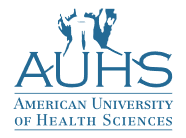Barbara Thurn-Tamayo DNP, FNP-C, APRN, CPN, Chair/Assistant Dean-Nursing Graduate Studies, American University of Health Sciences
Since the advent of penicillin in 1928, the world has been able to treat infections that were previously life threatening. From that time, multiple new classes of antibiotics have been developed and called in to use for a myriad of purposes, including treatment of disease in human and animals, as well as prophylactic use in animal feed. Due to over-use and inappropriate use, antimicrobial resistance (AMR) has developed. In the United States; it is estimated that 50% of outpatient antibiotic prescriptions are unnecessary and inappropriate (Eudaley et al, 2018). AMR accounts for about 2 million infections per year, contributes to 23,000 deaths, and may cost up to an additional $2.2 billion annually in health care expenditures in the United States (Sanchez, Fleming-Dutra, Roberts & Hicks, 2019). The statistics are even more alarming in lower-income countries, where AMR rates are currently higher and projected to increase at a higher rate than more developed, wealthier countries. In Brazil, India, and the Russian Federation, 40-60% of bacterial infections of record are attributable to antimicrobial-resistant pathogens, in comparison to the 17% credited to AMR in the wealthier Organisation for Economic Co-Operation and Development (OECD) countries such as the United States, Israel and Japan (OECD, 2018).
Increased globalization and mobility have led to the rapid spread of these resistant infections, such as the spread of carbapenem-resistant K. pneumonia which has spread to countries in 3 continents within 5 years (OECD, 2018). This rate of spread is predicted to quicken. The development of new antimicrobials has slowed, due to decreased monetary investment in new research and the subsequent failure of experimental drugs to come to market (OECD, 2018).
Antibiotic stewardship has become increasingly important to attempt to combat AMR. For prescribers this means judicious use of antibiotics, providing antimicrobials based on symptoms and diagnosis rather than meeting patient expectations, tailoring prescribed antimicrobials based on community patterns of resistance, and, perhaps most importantly, educating patients on the proper way to take antibiotics: when they are required and not, and the dangers of AMR (White, 2019).
References:
Eudaley, S. T., Mihm, A. E., Higdon, R., Jeter, J., & Chamberlin, S.M. (2019). Development and implementation of a clinical decision support tool for treatment of uncomplicated urinary tract infections in a family medicine resident clinic. Journal of the American Pharmacists Association, 59(4), 579-585. https://doi.org/10.1016/j.japh.2019.03.006
OECD (2018). Stemming the superbug tide: Just a few dollars more. OECD Publishing. https://doi.org/10.1787/9789264307599-en.
Sanchez, G. V., Fleming-Dutra, K. E., Roberts, R. M., & Hicks, L. A. (2019). Core elements of outpatient antibiotic stewardship. Morbidity and Mortality Weekly Report 65(6), 1-12. http://dx.doi.org/10.15585/mmwr.rr6506a1
White, A. T., Clark, C. M., Sellick, J. A., & Mergenhagen, K. A. (2019). Antibiotic stewardship targets in the outpatient setting. American journal of infection control 47(8), 858-863. https://doi-org.frontier.idm.oclc.org/10.1016/j.ajic.2019.01.027

